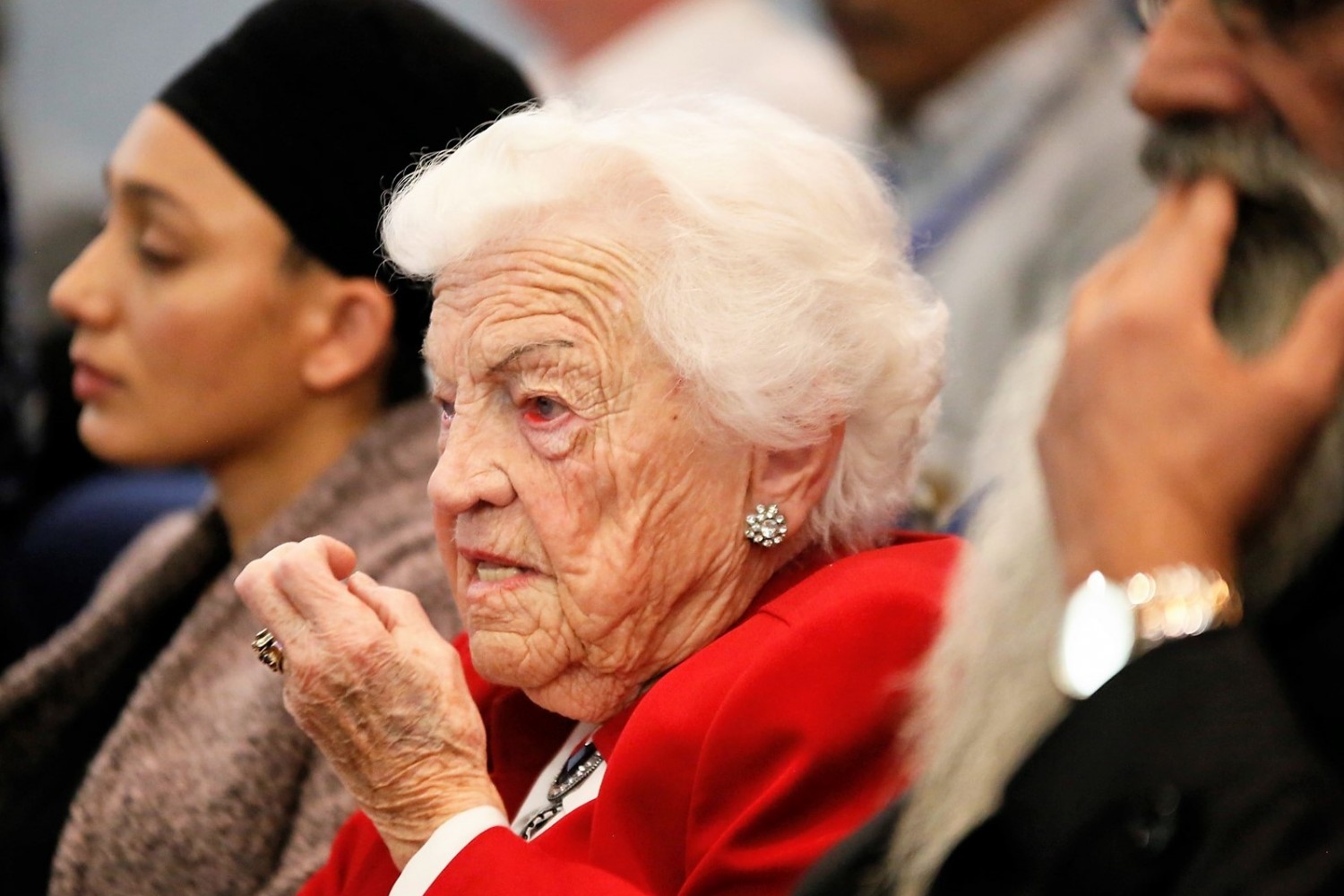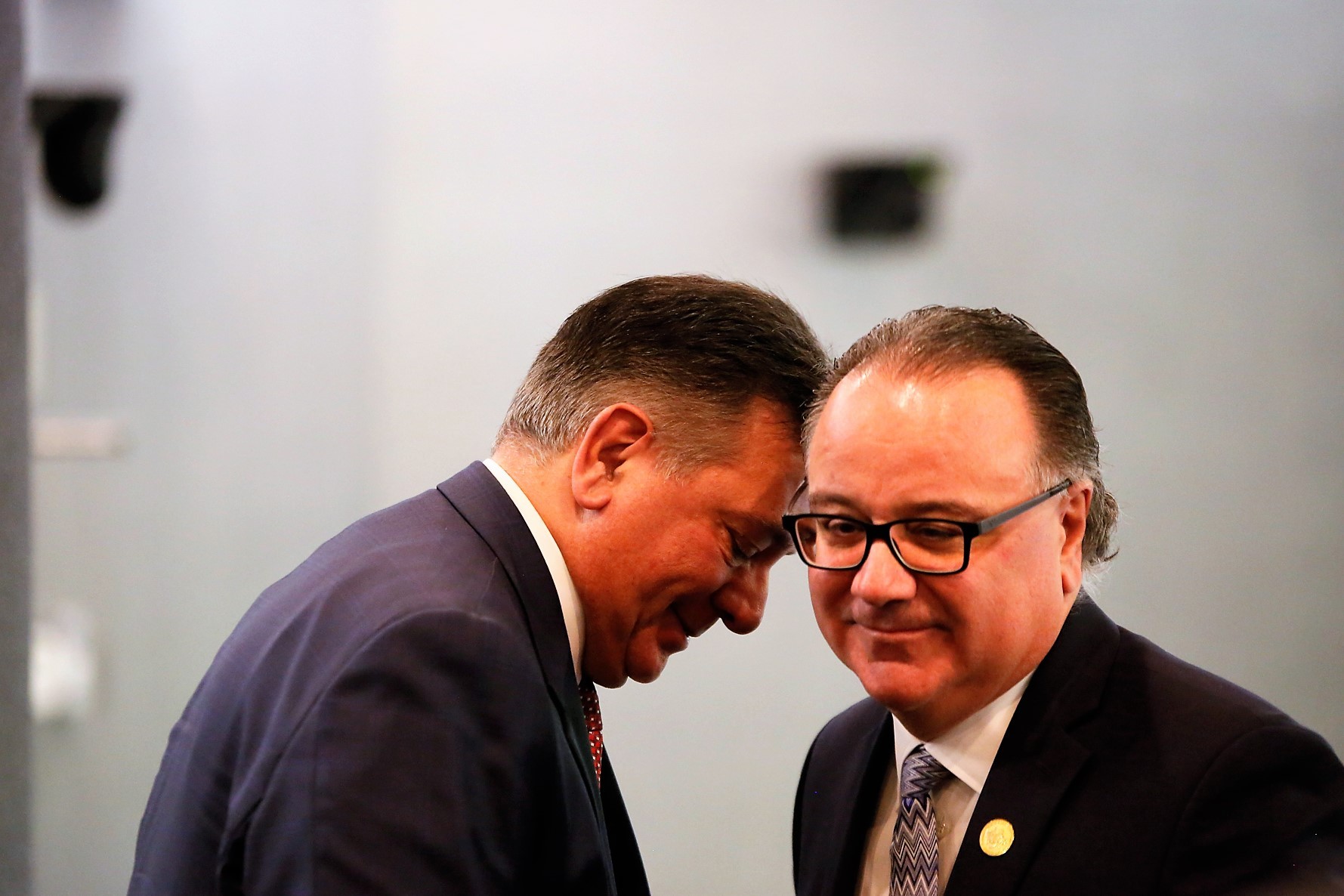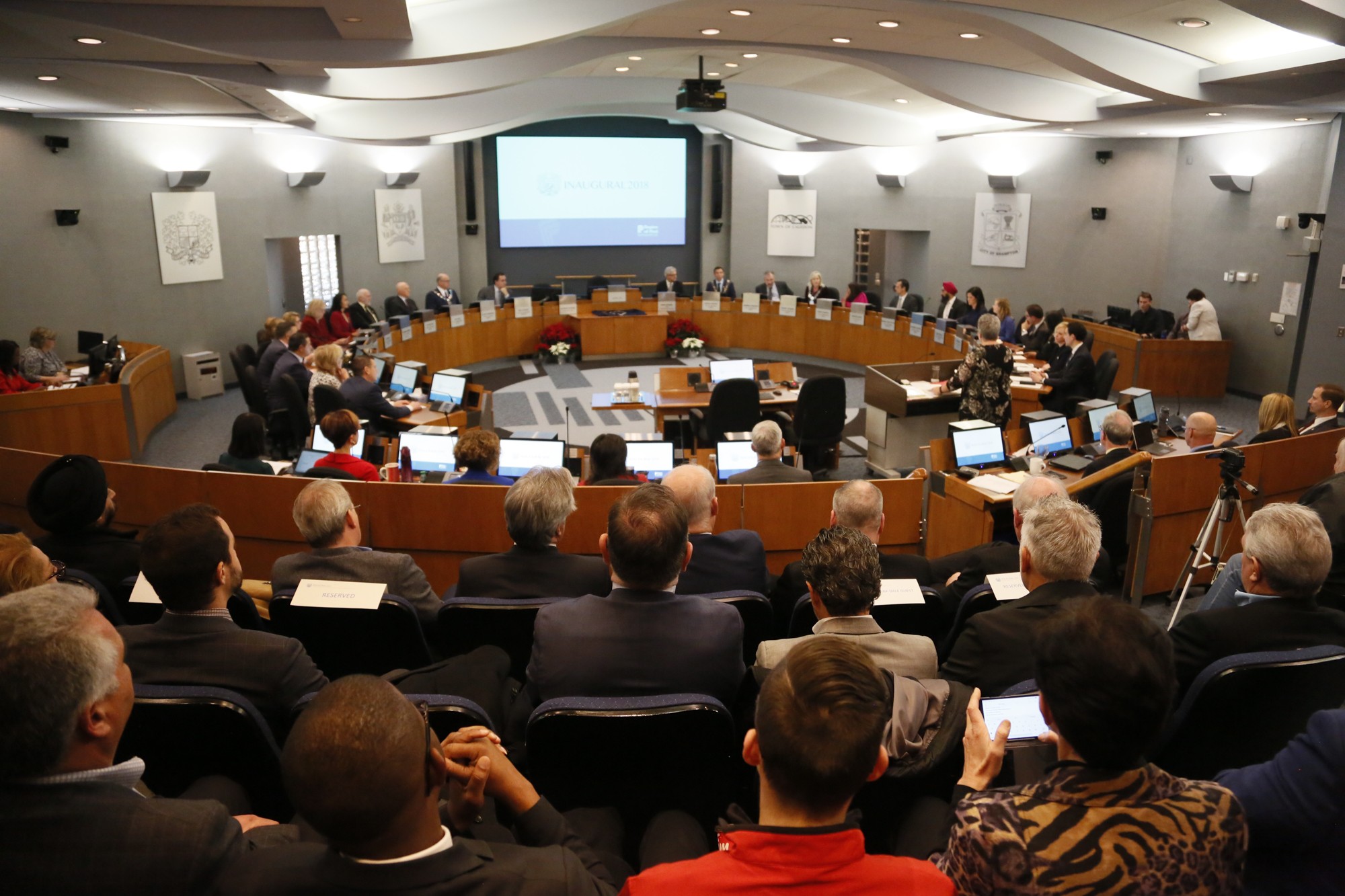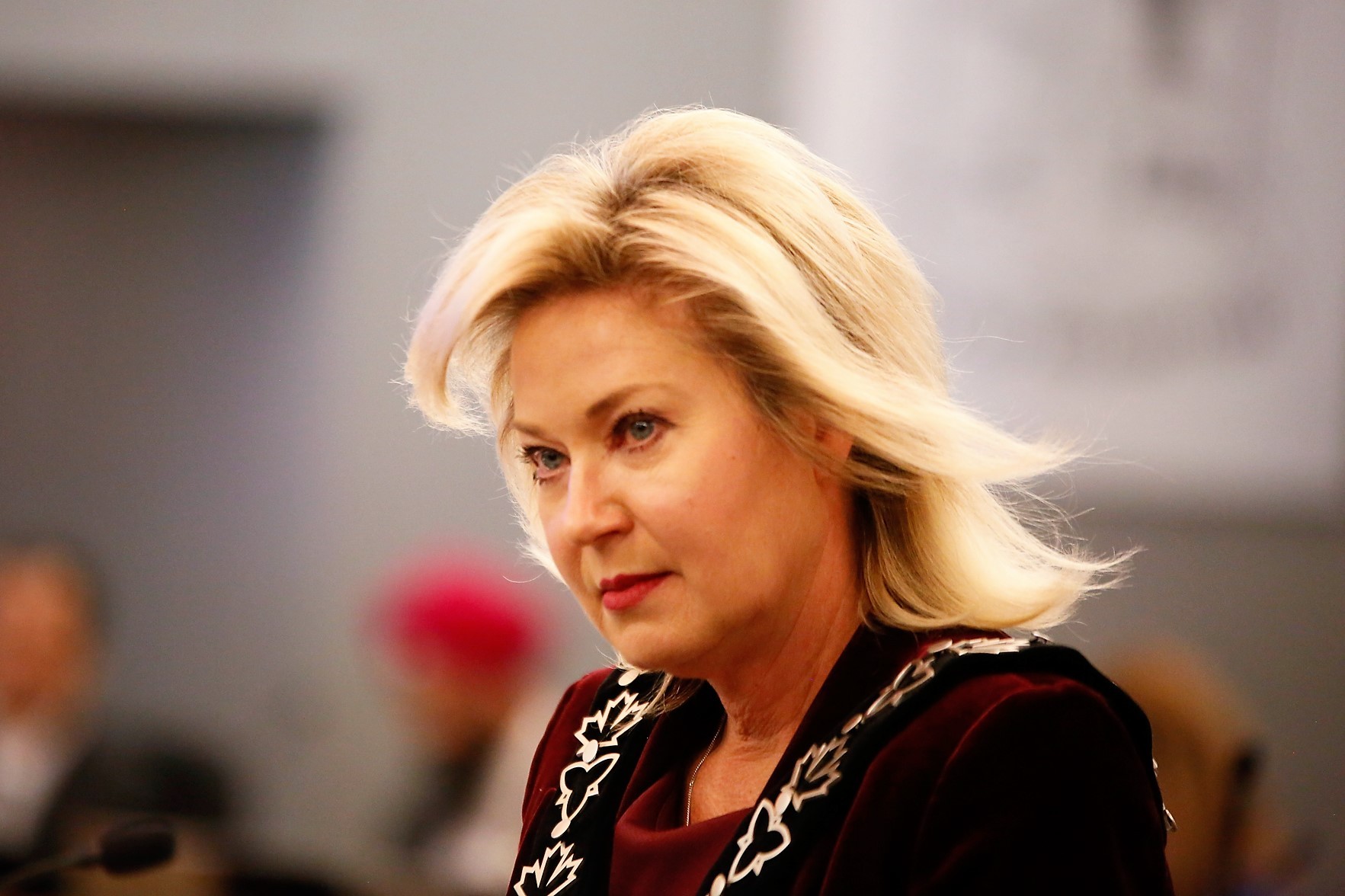
Hazel McCallion and Doug Ford have plans for Peel Region; Brampton taxpayers better prepare for a fight
An ancient earthling with a keen eye for the movement of celestial bodies and a talent for rudimental calculus finally deduced that the world did a complete rotation around the sun every 365 days. Ever since then we’ve celebrated New Year’s.
For some, the Dec. 31 to Jan. 1 changeover is time to party hardy, to raise a toast or two to the patron-saint of New Year’s, Robbie Burns, whose ode to regret and renewal, Auld Lang Syne, is sung heartily whenever the clock ticks down from December to January.
The day after the night before is when most bleary-eyed partiers make their New Years’ resolutions. Stop drinking. Ditch the wicked weed. Lose weight. Eat better. Be better.
For the seven Brampton members who now sit on Peel regional council, next year’s resolution might be this: how do we keep together the two-tier governance model that has been the connecting tissue in this area of the province since 1974 when one-third of the group (Mississauga) has made it clear that it wants out? No compromises. No re-alignments. No new funding formulas. Just O.U.T., out.

Charles Sousa and Nando Iannicca
Furthermore, does our neighbour to the south now have a champion in place at Queen’s Park to make it happen?
Enter the dark knight, the bully on the black steed: Doug Ford, the recently elected premier of the province.
Ah yes, Ford, empowered by a majority of seats at Queen’s Park (despite only 40 per cent of the vote in last June’s provincial election), he has seized control of the archaic Municipal Act (b. 1849), and won the support of the archaic former mayor of Mississauga, Hazel McCallion (b. 1921), and both seem determined to rip apart the regional governance model (b. 1974) put in place by Brampton’s own Bill Davis, another PC leader who ruled from 1971 to 1985.
They’ve got the backing of many in the large 12-member Mississauga contingent, led by Bonnie Crombie, McCallion’s successor. Brampton, with its seven members on regional council and Caledon with its five, can only force a tie on major issues that set Mississauga on its own course, if the city has a united front. Now, Iannicca, who has the deciding vote, gets to settle any future split between the other 24 members.
Ford and McCallion hate wasting money, and the duplication of services. Ford’s first order of business when he took over as chief executive of Ontario was to order a full audit of the spending habits of the freebooting Liberals under Kathleen Wynne. He was quick to shuck off the Progressive arm of the PC Party platform, and embrace the more Conservative side, taking a blow torch to Ontario Hydro’s executive pay packets, and even had enough time to target Brampton.
Remember that $90 million promised by the province to bring a satellite campus of Ryerson University to this city?
Eliminated.
Those gun-toting thugs roaming our streets, did Ford have Brampton’s safety in mind when handing Toronto $25 million this summer to fight its crime wave? Nada for us.
Would Queen’s Park send a few crumbs our way when it came to solving “hallway healthcare,” a phenomenon and nickname that began at our very own Brampton Civic?
Not a chance.
Would provincial dollars get spent to speed up the badly needed expansion of the overcrowded provincial courthouse on Hurontario?
No.
Would Queen’s Park rise to the challenge of bringing all-day GO train service here, or pass legislation to ease the burden on local drivers stung by higher insurance rates because of this city’s toxic postal codes? And what are the chances Brampton will see all-day GO train service any time soon? Or will the LRT begin construction in Mississauga then work its way up here? And will the PC announcement on the restructuring of social support services become code for more deep cuts to a sector increasingly relied upon by those in our city struggling to find housing, jobs and child care?
The jury’s still out.
The party in power at Queen’s Park is very much into shrinkage. Killing expectations. Embracing claw backs. Putting those public dimes into a piggy bank that will be broken open to help beat down our massive debt.
That’s the backdrop to the inaugural meeting of the regional council on Thursday (Dec. 6), which picked new chair Nando Iannicca, the long-time Mississauga councillor.

The election ended up a two-person race, the fast-talking Iannicca versus the more reserved Charles Sousa, the former Mississauga South MPP and finance minister in the Wynne government. But did the machinations going on behind the scenes at Queen’s Park, make Iannicca’s win mute?
It’s hard to have a voice when someone’s controlling what you say.
Is there something more fundamental at work here: like the dismantling of the regional form of government?
John Sanderson, the former regional councillor from Brampton, who almost beat Frank Dale (Iannicca’s predecessor) to win the chair in 2014, says the fact Ford chopped the Toronto council in half without any notice right after his election win in June (after he said nothing about plans to alter Toronto’s governance model), portends badly for Peel. Having McCallion, a lifelong Liberal, back his position as premier, makes it look as if the political world has slipped off its axis.
The rumours that she has joined the Ford team as a consultant to look at fixing the governance model that currently rules over regional government, should send a shiver down the spine of members of the Brampton and Caledon delegations who sat around the regional table on Thursday. Hazel has been sniping at regional government since she was mayor of Streetsville.
Sanderson says there are other cryptic signs that something favouring Mississauga is in the offing.
Ford also eliminated the public vote to choose a new regional chair. Initially it looks like a bully-boy tactic, a way for him to cut the political knees out from under his arch-enemy and predecessor at the head of the Ontario PCs, Patrick Brown, then a candidate for the chair’s job, and now the Brampton mayor.
But for fans of regional government, maybe it was greasing the skids for something with more sinister aims, the paring down, or outright elimination of Peel Region.
Sanderson thinks Ford has a taste for bloodletting, and like Macbeth, is hunting for fresh victims.
It’s ultimately an uncomfortable dynamic having one of the leaders of the independence movement in Mississauga – Crombie – also sitting on regional council and the police board, then nominating Iannicca for the position of chair. It’s also sliding into the theatre of absurd when another vehement critic of municipal government’s second-tier, sits in the audience and leads a delegation in support of Sousa’s candidacy. But that’s what you had Thursday as McCallion, the Queen of Mississauga who has long tried to dismantle the larger empire Davis created, sat and watched and shook her head in disappointment as her pick was beaten by a fellow Mississaugan – who follows in the footsteps of another, Dale (2014- ‘18). In fact, except for the long reign of former Caledon mayor Emil Kolb (1991-2014), it’s been all Mississauga all the time at Peel’s top executive position (Lou Parsons, 1974-’79, and Frank Bean 1979- ‘91).
Brampton, like its recent record at Queen’s Park, has been shut out.
There was talk that retired Brampton councillors Elaine Moore and Gael Miles, and perhaps even former mayor Linda Jeffrey, would take a run at the top prize, but after almost a dozen candidates put their names out there, only two emerged to gain nominations.
Ironically, Brampton’s Ward 3&4 regional councillor Martin Medeiros ended up seconding Iannicca’s nomination, and Mayor Patrick Brown nominated Sousa, a man he knew and respected in the Ontario legislature, although they sat on opposite sides of the aisle.
McCallion has been a vocal critic of regional council from day one (1974). Although its architect, Davis, argued that if it wasn’t for this legislation, the former mayor of Streetsville might never have been given the opportunity to strut her stuff on a larger stage.
Bonnie Crombie has walked in lockstep with her predecessor, who helped put her in the mayor’s seat in 2014, when McCallion calculated that Crombie, not mayoral hopeful Steve Mahoney, would be more loyal to her majesty’s desires.

Mississauga Mayor Bonnie Crombie
McCallion asked the province to begin the transition to a separated city in advance of the 2006 election. A Citizens’ Task Force recommended regional government be phased out within five years. A chartered accountancy firm was hired to do a financial analysis of the two-tiered system, and reported that a separate city would save taxpayers $32 million a year. It spawned a campaign called, ‘One City One Voice’, and heightened the efforts to secede. McCallion only had to look at rich suburbs like Santa Monica and Malibu that opted out of the Los Angeles maelstrom because they didn’t want to pay higher service fees. Same with Staten Island which left the expensive partnership with New York City to go it alone in the 1990s. The argument gained more credence because cities like Barrie, Windsor, London, even Thunder Bay are single-tier cities. Why wouldn’t Canada’s sixth largest city go the same route?
Over a decade later, Crombie now has that figure of $32 million fixated in her mind and trotted it out in an interview after Iannicca had taken the oath of office. She has also made clear that, beyond the savings to taxpayers, the elevation in status is crucial for a city trying to cut the cord with its higher level of government, while it aspires to become one of the world’s first cosmopolitan centres to emerge from a suburban stereotype. In this, Crombie has reached far beyond the small ambitions of McCallion, long beholden to a group of land-grabbing builders and known as “The Queen of Sprawl.”
After Thursday’s decision the mayor said: “I believe in single-tier government. Look at those other cities. It’s vital that we get this right.”
What’s right for Mississauga, might look all wrong for Brampton, or Caledon, which are dependent on the region’s vast system of public utilities, especially water and sewage treatment, both located securely in Mississauga south, right by the briny shores of Lake Ontario. Brampton needs to keep the taps running and the toilets flushing if it is to remain viable, and competitive for businesses.
Crombie wants to quiet concerns and insists that elimination of regional government will keep the partnership strong between the three communities. She said it will be “utility based.”
Kolb was an interested spectator on Thursday as well, and watched wistfully as Iannicca took the gavel and began a job he loved. He also detests even the hint of separation. “When it comes to sewer and water and all the other services, we’ve built this together, and the taxpayers of those communities [Brampton and Caledon] have already paid their fair share to make sure facilities got built. They own these things, too.”
Disengaging regional government isn’t like breaking apart the interlocking pieces of a Legoland park. Much of Peel is fixed, set. Not snapped together. It’s one part.
Kolb asked: “How can you cut something in half? The water from Lakeview goes all the way up to Bolton? We’ve built a growth system that is both north and south and east and west.”
When asked if he would be part of a delegation to storm Queen’s Park and oppose any possible legislation to start the process of dismemberment, he said “yes, absolutely.” Then he asked rhetorically: “How can you dismantle something as big as this?”
Medeiros acknowledged that Ford, with McCallion, Crombie, and most on Mississauga council onboard, might try. Yet he still nominated the man who will likely be dispatched to finish the job.

Brampton Regional Councillor Martin Medeiros
Sousa, by all accounts, is much more a diplomat. It’s how he’s managed his entire political career, working across aisles. That’s why Caledon’s members and Brown put their faith in the former provincial finance minister, hoping he would steer Peel forward with a steady hand, even if it means dismantling the ship. There are approaches that could work: infrastructure sharing and equalization models to ensure Brampton gets its fair amount of growth-related dollars from its already built-out neighbour to the south. And positioning Caledon with similarly rural communities in counties to its north.
His supporters felt Sousa would look to solutions collaboratively. He is not about ramming things down people’s throats.
Another notion being rumoured, wouldn’t make anyone happy, other than Ford, who loves to ram things down people’s throats – usually just to settle old political scores. He’s the most petty of politicians, a style of self-interested operator who no doubt takes his personal cues from the man who leads south of the border.
Sanderson warned that the creation of a megacity, eliminating Mississauga, Brampton and Caledon altogether in favour of the City of Peel, was tried in Toronto by Mike Harris and his Common Sense revolutionaries in Queen’s Park, and it had an immediate political impact – sweeping the PCs from office.
“Bigger is not always better,” said Sanderson.
Steve Paikin, the popular host of TVO’s ‘The Agenda’, and author of Bill Davis: Nation Builder, and Not So Bland After All, wrote in his blog earlier this summer that whenever the province tries to make major changes to municipalities anywhere in Ontario, “the resulting foofaraw almost always gets ugly.”
He brings up the Harris example of taking a successful (if occasionally unwieldy) two-tier model of governance and amalgamating the old City of Toronto, North York, Scarborough, Etobicoke, York, and East York into a single-tiered system.
The megacity resulted in megadeath for his party, in part because it was provincially imposed, consultation-free and had little grassroots support from the citizens living in these communities – infuriating people of all political stripes who were directly impacted.
Paikin points out in its aftermath, the PCs didn’t win a single seat in T.O. over the next four elections. He concluded: “It’s not an exaggeration to say that, while Torontonians won’t always quarrel with a provincial solution, they will storm the barricades if that solution is rammed down their throats without due process.”
Are we headed for a similar showdown in Brampton?
McCallion’s endorsement of Ford seems to have started the clock running on a countdown to the implosion of regional government. Although she wouldn’t confirm with The Pointer that she’s been summoned by him to consult, it’s clear where she stands, and Ford has already tipped his hand. The gutting of Toronto council, and the elimination of public voting on a new regional chair here, and in other jurisdictions around the province, might be just the start of more to come.
A video has been posted by Ford Nation showing McCallion explaining her reasons why she believes he is the “right leader” and why she believes the PC party will be beneficial for everyday Ontarians. “As mayor, I never ran the city based on debt,” she said, an obvious shot at Wynne. “That’s why I’m supporting Doug Ford, because he is the right leader to bring Ontario back to its status as the leading province in Canada.”
Crombie’s speech Thursday, while complimentary, was also delivered under a storm cloud of doubt about the very future of the institution her former colleague now leads, but one she and her council does not want to be a part of.
She praised Iannicca’s background on the police board, and said he knows every file. There is no learning curve. It is back to work this afternoon. He understands our histories, and moving each municipality forward, she said. These are tumultuous waters, uncertain times, and there’s governance reviews of each region by Ford. We need someone who can hit the ground running. Her conclusion: “He’s the right choice at the right time.”
Brown was all-in on Sousa, and just as effusive in his praise. How lucky we are to have two great candidates, he said. He boasted about Sousa’s 12 years at Queen’s Park and the fact he oversaw six budgets, and had a 20-year history in the banking industry with RBC. He said as a former finance minister he would bring sterling credentials to the office and guide the region forward over the next four years.
The two candidates hugged each other before they spoke, and after the vote was complete.
It was all a stirring call to move forward, with one ominous cloud hanging over the proceedings: the future of the region itself.
Crombie, and most of the representatives from Mississauga prefer it die a quick death. They didn’t want to vote on Thursday. They didn’t want a new chair. They don’t want a region.
They may be right. On many levels it seems outdated for the sixth and ninth largest cities in the country, with big urban issues on the immediate horizon, such as higher-order transit, gangland crime and constant waves of newcomers who need unique supports, to be partially governed by five politicians from Caledon.
The northern neighbour’s leaders seem more concerned with steering land development toward agricultural properties owned by family and friends and gobbled up by supportive builders, comically pathetic planning that’s costing Brampton and Mississauga taxpayers millions every year.
What would many of these councillors from rural Caledon know about the major urban issues facing two of Canada’s biggest, most dynamic cities?
Crombie and McCallion might have disagreed on who they wanted to see lead region council, but they did agree on a bigger issue: it’s time for it to go.
The question now is: what will Ford do?
Will he tumble back to a bygone era when the neo-cons under Harris declared war on too much government and created the megacity in Toronto?
Will they create another one, the City of Peel?
Will McCallion, who remains at age 97, the oldest political renegade in the province, have her way and finally see Mississauga finally get its long-sought emancipation proclamation? It’s something she has yearned for since 1974.
Does the Miss in Mississauga, Canada’s most famous urban icon, still have enough influence to force the hand of the provincial government?
Does she still embody the old adage: When there’s political will, there’s always a way?
During her life, she was architect of Mississauga’s growth into the sixth largest city in Canada. Will her final chapter be destroyer of the country’s second largest region?
If that happens, a few things are certain: Iannicca’s time as chair will be a short one; Brampton and Caledon’s fates will be fraught with uncertainty; and those water and wastewater bills for residents of both communities might start going up – along with the cost of other services currently handled by the region.
Brampton was told in 2015, by the former provincial auditor general who was hired to enter city hall and review its books, that things were a mess. Recent property tax increases were excessively high. Bloated staffing costs were eating up almost all revenue gains from hyper-growth. That expensive sprawling development, stretching services and infrastructure to far corners, could not be sustained by a tax base alarmingly dependent on residential levies, with commercial and industrial contributions woefully low. The city could not move forward with needed projects and renewal of ageing infrastructure as budgets had become glaringly tight. And reserve funds, once flush with cash for rainy days, were dwindling to dangerous levels.
Spectacular mismanagement under the leadership of Susan Fennell was no doubt the biggest reason for the problems any resident can witness just by looking out the window, or at their property tax bill.
But now, any serious, structural burden from the downloading of costs borne currently by the region, if it no longer exists, could cripple Brampton. It’s an issue the city’s residents need to start getting involved with.
More troubling is that, seemingly for political reasons, five Brampton councillors at the region, supported Iannicca. Some of their reasons were laughable. Medeiros, who seconded the nomination, suggested Iannicca could better help Brampton with its Main Street LRT because the former downtown Mississauga councillor was instrumental in bringing the light rail project to the region, which doesn’t even deal with Mississauga’s and Brampton’s transit decision making.
McCallion drove the LRT project, as a former member of the board of directors of Metrolinx, the provincial transit agency that awarded the route, and Crombie helped lobby the former Liberal government to secure the $1.6 billion in funding.
Iannicca basically raised his hand at the Mississauga council table when he was told to.
After Iannicca’s win, he addressed colleagues and a large audience of onlookers gathered in the gallery at regional council chambers. He was upbeat, almost giddy, and said his former colleagues gave him the “remarkable privilege” of leading the council over the next four years.
Perhaps.
He thanked them for the vote.
The collegial spirit afterward might not last long if the province decides it’s time to re-do municipal governance models in 2019.
The inauguration of the 2018-2022 regional council began with a stirring rendition of O Canada.
If Ford or Crombie or McCallion or the rest of the dissidents on Mississauga council have their way, the last session might come sooner than expected, and end with another catchy tune, Auld Lang Syne.
Submit a correction about this story


